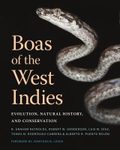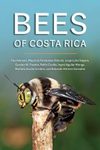By: Janis L Dickinson(Editor), Rick Bonney(Editor), Richard Louv(Foreword By), John W Fitzpatrick(Afterword by)
279 pages, 5 b/w photos, 26 b/w illustrations, 3 b/w maps, 6 tables
![Citizen Science Citizen Science]()
Click to have a closer look
About this book
Contents
Customer reviews
Related titles
About this book
Citizen science enlists members of the public to make and record useful observations, such as counting birds in their backyards, watching for the first budding leaf in spring, or measuring local snowfall. The large numbers of volunteers who participate in projects such as Project FeederWatch or Project BudBurst collect valuable research data, which, when pooled together, create an enormous body of scientific data on a vast geographic scale. In return, such projects aim to increase participants' connections to science, place, and nature, while supporting science literacy and environmental stewardship. In Citizen Science, experts from a variety of disciplines – including scientists and education specialists working at the Cornell Lab of Ornithology, where many large citizen science programs use birds as proxies for biodiversity – share their experiences of creating and implementing successful citizen science projects, primarily those that use massive data sets gathered by citizen scientists to better understand the impact of environmental change.
This first and foundational book for this developing field of inquiry addresses basic aspects of how to conduct citizen science projects, including goal-setting, program design, and evaluation, as well as the nuances of creating a robust digital infrastructure and recruiting a large participant base through communications and marketing. An overview of the types of research approaches and techniques demonstrates how to make use of large data sets arising from citizen science projects. A final section focuses on citizen science's impacts and its broad connections to understanding the human dimensions and educational aspects of participation. Citizen Science teaches teams of program developers and researchers how to cross the bridge from success at public engagement to using citizen science data to understand patterns and trends or to test hypotheses about how ecological processes respond to change at large geographic scales. Intended as a resource for a broad audience of experts and practitioners in natural sciences, information science, and social sciences, Citizen Science: Public Participation in Environmental Research can be used to better understand how to improve existing programs, develop new ones, and make better use of the data resources that have accumulated from citizen science efforts. Its focus on harnessing the impact of "crowdsourcing" for scientific and educational endeavors is applicable to a wide range of fields, especially those that touch on the importance of massive collaboration aimed at understanding and conserving what we can of the natural world.
Contents
Foreword by Richard Louv
Notes on Contributors
Acknowledgments
Introduction: Why Citizen Science?
Part I. The Practice of Citizen Science
1. Overview of Citizen Science
2. Projects and Possibilities: Lessons from Citizen Science Projects
3. Using Bioinformatics in Citizen Science
4. Growing the Base for Citizen Science: Recruiting and Engaging Participants
5. What Is Our Impact? Toward a Unified Framework for Evaluating Outcomes of Citizen Science Participation
Part II. Impacts of Citizen Science on Conservation Research
6. The Opportunities and Challenges of Citizen Science as a Tool for Ecological Research
7. Widening the Circle of Investigation: The Interface between Citizen Science and Landscape Ecology
8. Using Data Mining to Discover Biological Patterns in Citizen Science Observations
9. Developing a Conservation Research Program with Citizen Science
10. Citizens, Science, and Environmental Policy: A British Perspective
Part III. Educational, Social, and Behavioral Aspects of Citizen Science
11. Cognitive Considerations in the Development of Citizen Science Projects
12. Who Poses the Question? Using Citizen Science to Help K-12 Teachers Meet the Mandate for Inquiry
13. A Gateway to Science for All: Celebrate Urban Birds
14. Children and Nature: Following the Trail to Environmental Attitudes and Behavior
15. Internet-Based Social Networking and Collective Action Models of Citizen Science: Theory Meets Possibility
16. A Role for Citizen Science in Disaster and Conflict Recovery and Resilience
Afterword by John W. Fitzpatrick
Literature Cited
Index
Customer Reviews
By: Janis L Dickinson(Editor), Rick Bonney(Editor), Richard Louv(Foreword By), John W Fitzpatrick(Afterword by)
279 pages, 5 b/w photos, 26 b/w illustrations, 3 b/w maps, 6 tables
"Citizen Science succeeds in showcasing a path to knowledge that is unfamiliar to – and, at first glance, unwanted by – many professional scientists. Its well-written, wide-ranging, and accessible chapters make a compelling argument that engaging the public in scientific research is important in order to increase our environmental knowledge and build a citizenry that values and uses what sciences produces. This book inspires the professional to see the scientist in everyone and to broaden our research programs, which will stoke the fire of scientific curiosity that burns within each of us."
– John M. Merzluff, BioScience (February 2013)
"Not only does this research allow for extensive data collection, but it makes research relevant to the general public and provides additional teaching tools for K-12 education. This book also explores the impact of the increased use of social media on the success of citizen science projects and investigates potential future uses of social media for such projects. It incorporates the views of many subject experts, with each chapter written by those with firsthand experience of the respective topics. An extensive bibliography provides sources for further information. Summing Up: Highly recommended."
– D.L. King, Choice (November 2012)
"Dickinson and Bonney's volume, Citizen Science, represents an important foundation text to launch the burgeoning arena of citizen science [...] This book provides the 'recipes' for all scientists to undertake an aspect of citizen science as part of their research portfolio. My overall reaction is 'Awesome!'"
– Meg Lowman, Ecology (April 2013)




































